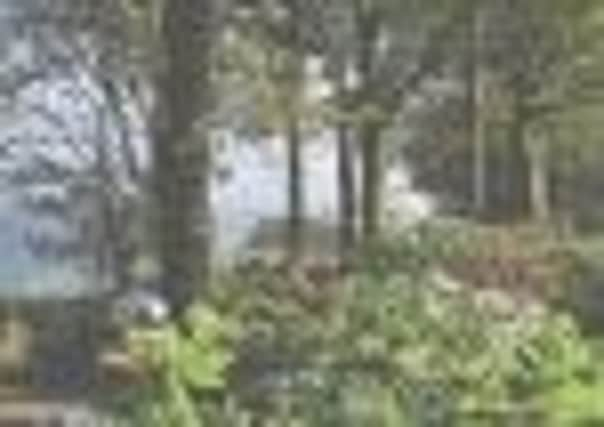Anne Greenall describes her glorious plant collection as an accident


Situated at the top of a hill, the house overlooks the Heads of Ayr, a dramatic landscape of cliffs and rocky beaches, The property sits in an exposed position, vulnerable both to salt-laden winds and a high annual rainfall.
Establishing a collection of these glorious plants, says Anne, who spent the first ten years of the couple’s time here raising their three children, was an accident. “I really wasn’t interested in the garden at all,” she recalls. “But when people gave me presents of hydrangeas in pots, I dug a hole and stuck them into the garden afterwards, and found I really liked them.”
Advertisement
Hide AdAdvertisement
Hide AdAs she became increasingly interested in the garden, she began buying the occasional hydrangea, slowly discovering the different types, including fluffy headed H. arboresence, with its creamy hybrids “Annabelle” and “Grandiflora”, reliable, pink, blue and white H. macrophylla, and pyramid-shaped H. paniculata.
These were gradually incorporated into the woodland garden that wraps round the 18th-century farmhouse on three sides; the fourth side is bound by the walls of the adjacent farm from which valuable nutrients have helped enrich her soil.
Gradually, a dynamic foundation pattern emerged, which continues to evolve as new plants arrive and old ones are moved. The formal area with the drive is at the front. To the east, the old driveway, lined with a packed canopy of blue and white hydrangeas, leads directly onto the road. To the rear, winding paths lead round beds filled with different types and colours. “I try to mix all the plants and the soil sorts out their colours,” Anne explains.
It was a friend who pointed out how good some of her hydrangeas looked and suggested collecting them, so, not knowing where to start, Anne bought Hydrangeas: A Gardener’s Guide and began reading. “I looked up the plants I liked and bought them; I also got cuttings from various gardens and grew them.” Eventually the collection became part of the National Council for the Conservation of Plants and Gardens, the organisation dedicated to the conservation of British plant heritage. Their ethos, Anne says, fits perfectly with her own, as she loves the old varieties of hydrangea.
Now numbering more than 150 different types, her collection includes the tall, sculptural villosa, quercifolias, laceheads and mopheads. Some have been planted in the field at the side of the house, recently converted into a garden, with a dramatic, arched metal structure supporting a swinging seat, carefully placed to take advantage of the magnificent sea views.
Anne’s advice to anyone wanting to start with a few hydrangeas is to “start with the old favourites because you know they will grow and flourish”. Dappled shade suits these maritime, woodland plants, as does a slightly acid soil: her soil is mostly acid with some alkaline patches, hence the need to sometimes move plants until the best position is found.
Recommended favourites include H. serrata “Miranda” which changes colour from pink to blue according to the quantity of acid in the soil and is well suited to a small garden. Larger H. macrophylla “Blue Wave” is found in Anne’s front drive, alongside white “Seascape”. White hydrangeas look wonderful in the dusk and help brighten a dark corner. Both these types are wind tolerant: H. serrata “Preziosa” changes colour from light pink to shades of deep red.
Nowadays, Anne says, it is harder to give pot plant hydrangeas a second chance in the garden as many are forced. But late summer and early autumn is the right time to take cuttings to grow them on in a mixture of nourishing compost and grit. Anne stands her pots in plastic bags. “I blow into them to keep the moisture in the pot to mimic their natural conditions,” she says.
Advertisement
Hide AdAdvertisement
Hide AdNew plants fare best when allowed to establish in the spring, “when there is plenty of growth in the roots”. Anne rarely feeds her plants and avoids weed killer, even on gravel, because the plants’ fibrous roots will soak it up.
Companion plants, well suited to growing with hydrangeas, are dotted around the garden, particularly in the informal area to the rear of the house, and include hardy geraniums which “thread through and flower late in the year”. There is purpled-leaved Heuchera for contrast, tall Thalictrum for early summer with lots of tulips for spring.
“They grow up through the bare wooden stems,” she says. Day lilies also add a touch of glamour, while the ribbon of Nerines at the foot of the front wall adds a splash of bubblegum pink.
Walking back to the front of the house Anne, like so many gardeners this year, says her garden has suffered from the wind and the wet. Nevertheless, she points out that hydrangeas have tolerated the conditions more than most plants. “We’ve had two weeks of non-stop rain and wind,” she says. “They are the only plant left, but so many of them still look beautiful.”